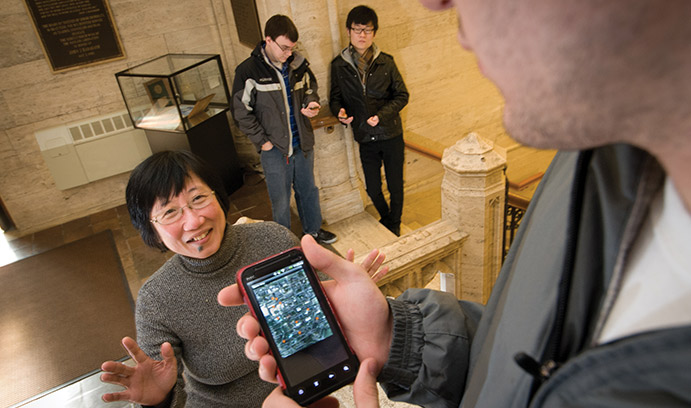Wireless Mobile Healthcare—and More
Mooi Choo Chuah laughs as she waves at the stacks of paper piled high on the desk, chairs and floor of her office.
“I enjoy doing research,” she says. “I’m interested in many interdisciplinary topics that solve real problems. Whenever a problem interests me, I spend tons of time reading up new material to learn how I can contribute to this new area.”
Chuah, a professor of computer science and engineering, was recently named a Fellow of IEEE (the Institute of Electrical and Electronics Engineers), one of the highest honors for people in her field.
IEEE, which calls itself the world’s largest organization for the advancement of technology, officially cited Chuah for her accomplishments in wireless network systems and protocol design.
Unofficially, one suspects that IEEE was equally impressed with the scope of Chuah’s work and the energy she brings to it.
Chuah fashions innovations for wireless Local Area Network-based systems, and for features that enable quality of service, mobility management in WLAN and 3G systems. She also designs security and disruption-tolerant network solutions for wireless and Internet-based systems.
AN EXPANDING RESEARCH ARENA
In the past few years, Chuah has expanded her research areas to include the electrical power grid, mobile visual search and, perhaps most notably, mobile healthcare applications.
“I believe it’s important for researchers to evolve,” she says. “That opens up more opportunities to contribute to new problems.”
One app that Chuah and her students developed, WiFiTreasureHunt, enables users to interact with the computer on their cell phones and to compete with their friends, while taking part in a real-world, location-based treasure hunt. The app can be extended to measure heart rates and award coupons for healthy snacks as users race from one treasure site to the next.
Working with peers at the Stevens Institute of Technology, Chuah recently designed a Gait-Based User Verification System, which can be used to verify that the walking steps taken by a user actually come from that user. “Our scheme is very robust,” she says. “It recognizes only my gait, and it rewards only my exercise accomplishments, and not someone else’s.”
Chuah takes a special interest in children with autism spectrum disorder, which impairs the ability to interact with others. To learn about ASD, she joined an autism ministry at a local church and consulted with faculty members in Lehigh's College of Education and Centennial School. Two of her students, seniors Jesse Kurtz and Kyle Moore, last fall designed Kinect for Kids, which allows kids with ASD to play Xbox- and Wii-like games.
By Kurt Pfitzer
Posted on:


